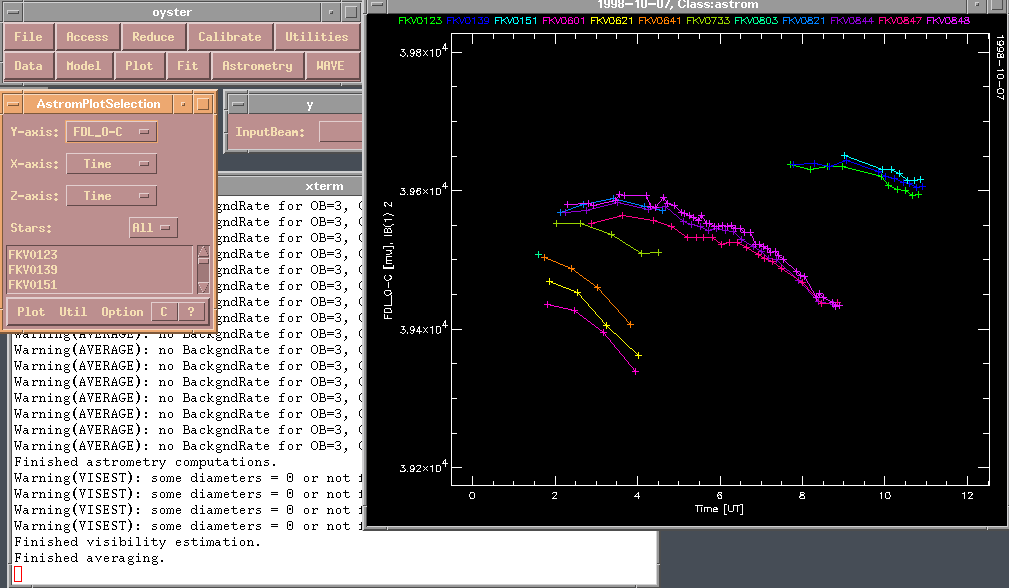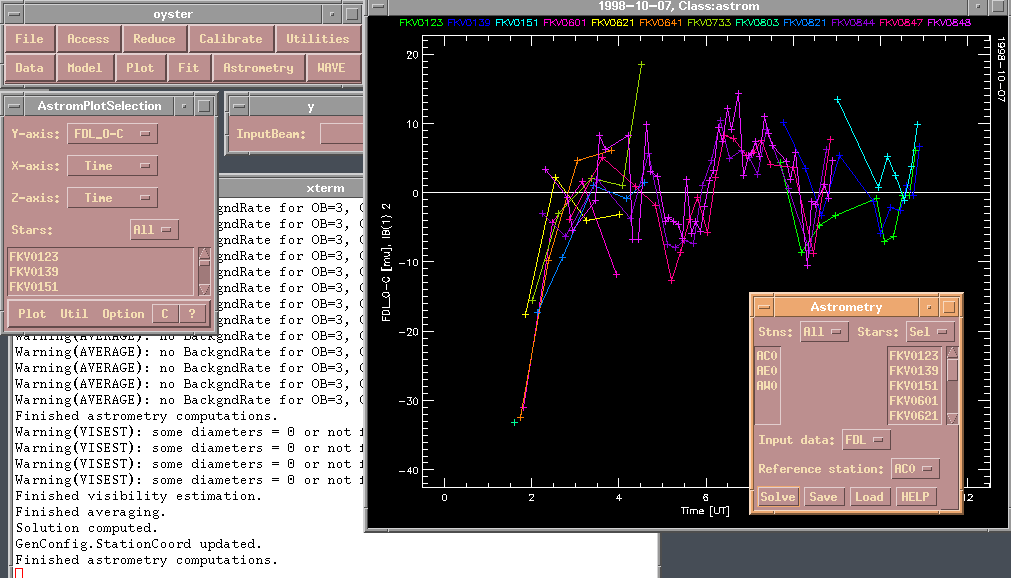Calibrating astrometric data

After averaging the point data, we should pay attention first to the
astrometry, i.e. the quality of the delay data and the station coordinates.
The latter should be updated so that the uv-coordinates have the best
estimates possible. Plot FDL_O-C, that is the observed minus calculated
FDL delays, versus time. Select the second and third input beams. The delay
on the first one is identical to zero by definition, because the positions
are always referenced to the delay line number 1. (The reference station
can actually be changed in the Calibrate|Astrometry|SOLVE menu. In this
context, remember that typically 'Delay' means a quantity referenced to a
reference station, whereas 'Pos' means the absolute position. The only
exception to this rule are the metrology delay corrections, but if you
work with those, you are probably a master in using OYSTER at this stage!)
Expect to see residuals initally on the order of tens of thousands of microns,
since we have the baseline coordinates in the system configuration file
not very up-to-date. To improve the residuals, select the SOLVE widget and
click on Solve. All parameters are set to reasonable defaults, i.e. asking
for station coordinate solutions, and not star position solutions (even
though that can be done too).

This figure shows the residual delays for station 2
after solving for station coordinates,
using the widget displayed in the lower right of the figure. A similar plot
for station 3 is not shown, but should be checked too.
Next stop
Back to tour page
Back to main help page

